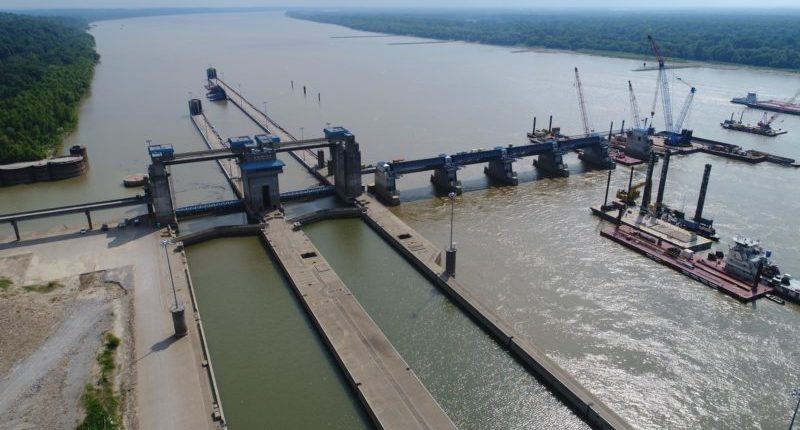In 1988, a new lock and dam at Olmsted, Ill., was authorized by Congress. The project’s estimated cost was $775 million with completion expected in seven years.
Thirty years and another $2 billion later, the Olmsted Locks and Dam project will finally open in October. (It is the subject of the October cover story in WorkBoat magazine.) It replaces Depression-era Locks and Dam 52 and 53, which had exceeded their design lives. Decades of funding problems and innovative design changes added years and costs to the project.
Barge operators are frustrated that the project took so long and that the huge cost overruns took funding away from other important navigation improvement projects. But the wait is finally over for operators who suffered through years of costly delays, as closures and slow maneuvering at L&D 52 and 53 have forced tows to wait hours and often days to pass through.
For operators, the biggest issue has been reliability of the inland navigation infrastructure. In recent months, delays have gotten so bad at 52 and 53 that many barge operators have been avoiding the area completely, taking more costly and longer routes.
Marty Hettel, vice president, government affairs at American Commercial Barge Line and chairman of an industry group that advises the Corps, said that since last November, delays have cost the industry $65 million. The Corps estimates that the wait time will be reduced from up to two hours at Locks 52 and 53 to about 30 minutes at Olmsted.
Barge operators and others worked with Congress to change the cost-sharing formula to get Olmsted completed and free up funding for other navigation projects, Michael Toohey, president and CEO of the Waterways Council, told WorkBoat.com.
That momentum must continue. The challenge, he said, will be to continually provide maintenance funding for Olmsted, and predictable and steady funding levels to complete other priority lock replacement projects.
WCI will continue to push for long-term changes in the cost-sharing formula, healthy budgets for the Corps, and for a portion of federal revenues from hydropower generation to be directed to the Inland Waterways Trust Fund. These are all healthy goals.





